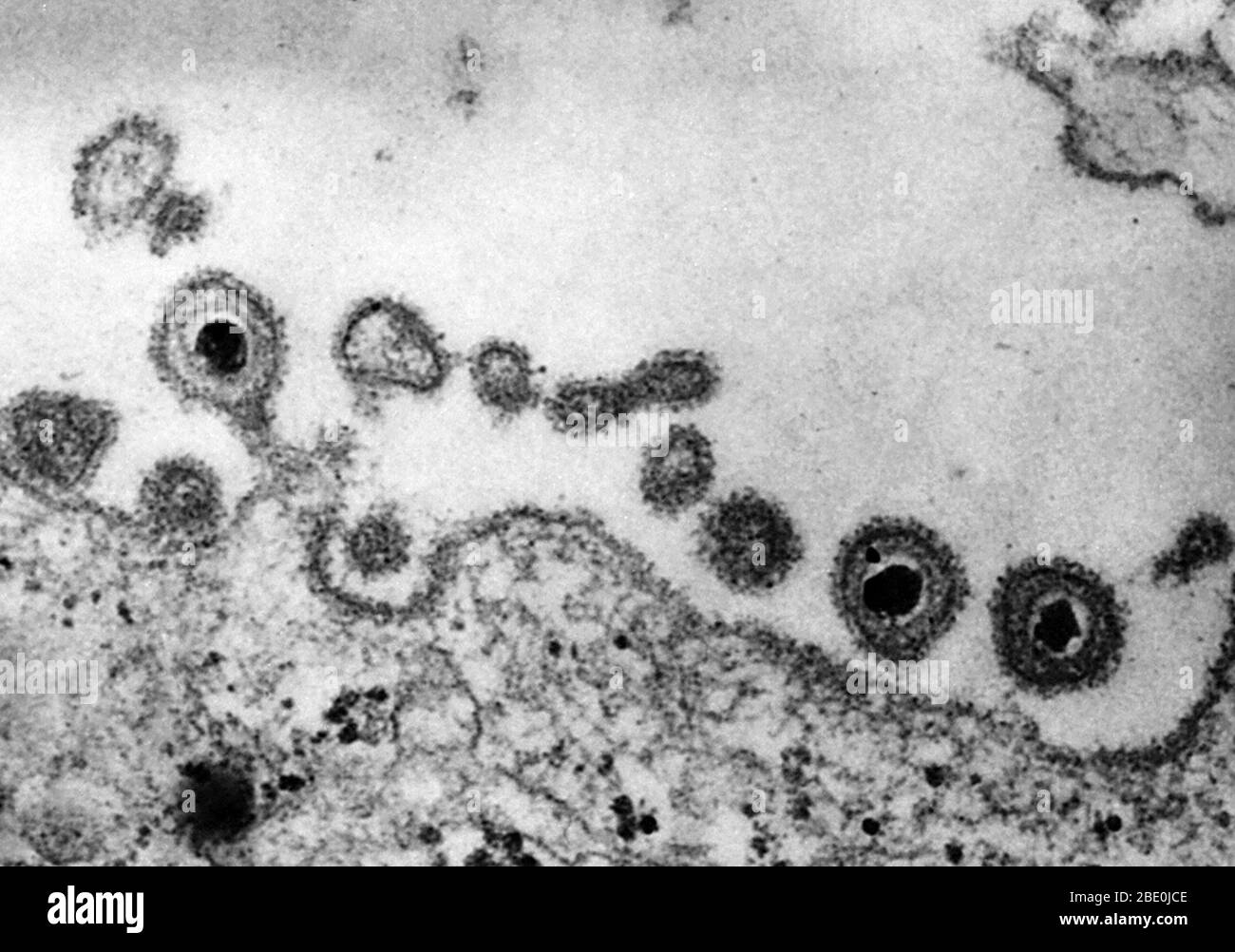Negative stained Transmission Electron Micrograph (TEM) revealing the presence of numerous herpes simplex virions, located extracellularly in this tissue sample. Genital herpes is a genital infection caused by the herpes simplex virus (HSV). Most individuals carrying herpes are unaware they have been infected and many will never suffer an outbreak, which involves blisters similar to cold sores. While there is no cure for herpes, over time symptoms are increasingly mild and outbreaks are decreasingly frequent. The typical manifestation of a primary infection is clusters of genital sores consist

Image details
Contributor:
Science History Images / Alamy Stock PhotoImage ID:
2BE0JCEFile size:
40.7 MB (1.2 MB Compressed download)Releases:
Model - no | Property - noDo I need a release?Dimensions:
4500 x 3158 px | 38.1 x 26.7 cm | 15 x 10.5 inches | 300dpiPhotographer:
Photo ResearchersMore information:
This image could have imperfections as it’s either historical or reportage.
Negative stained Transmission Electron Micrograph (TEM) revealing the presence of numerous herpes simplex virions, located extracellularly in this tissue sample. Genital herpes is a genital infection caused by the herpes simplex virus (HSV). Most individuals carrying herpes are unaware they have been infected and many will never suffer an outbreak, which involves blisters similar to cold sores. While there is no cure for herpes, over time symptoms are increasingly mild and outbreaks are decreasingly frequent. The typical manifestation of a primary infection is clusters of genital sores consisting of inflamed papules and vesicles on the outer surface of the genitals, resembling cold sores. HSV has been classified into two distinct categories, HSV-1 and HSV-2. Although genital herpes was previously caused primarily by HSV-2, genital HSV-1 infections are increasing and now cause up to 80% of infections. In 2013 about 1.1 billion people (15.9%) had asymptomatic genital herpes and 47 million new cases of genital herpes occurred. Magnification: unknown.